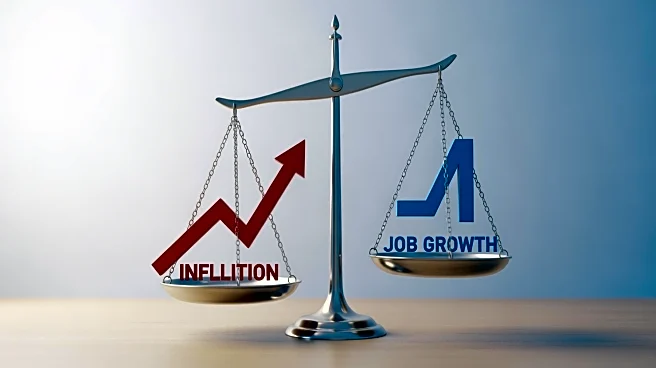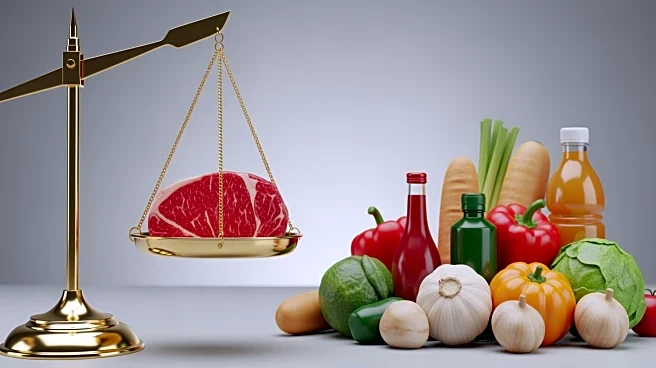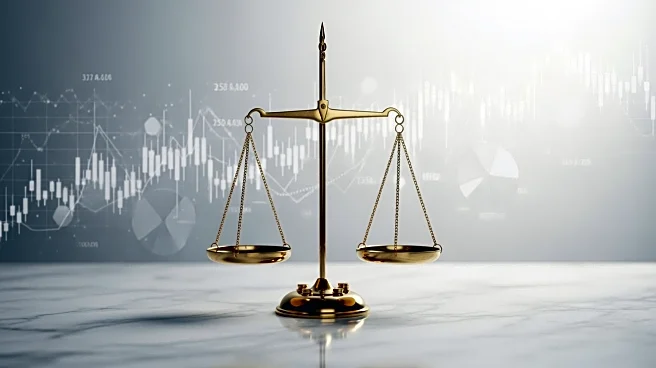What's Happening?
President Trump has repeatedly claimed that beef is the only grocery product experiencing price increases during his second term. However, data from the Consumer Price Index contradicts this assertion,
showing that prices have risen across various grocery categories. From January to September, prices increased in five of the six major grocery groups tracked, including meats, poultry, fish, and eggs, which rose by 4.5%. Other categories such as nonalcoholic beverages, cereals, bakery products, fruits, and vegetables also saw price hikes. Experts attribute these increases to tariffs on imported goods and a crackdown on undocumented immigrants, affecting the farm workforce.
Why It's Important?
The rise in grocery prices has significant implications for U.S. consumers, particularly those with limited budgets. The incorrect claims by President Trump may mislead the public about the economic realities they face. The broader price increases, driven by tariffs and immigration policies, could exacerbate financial strain on households. This situation highlights the need for accurate information from leadership to guide public understanding and policy decisions. The economic impact of these price changes could influence consumer spending and overall economic health.
What's Next?
If tariffs and immigration policies continue to affect grocery prices, consumers may face ongoing financial challenges. The administration may need to address these issues to prevent further economic strain. Additionally, public pressure could mount for policy adjustments to mitigate the impact on grocery prices. Stakeholders, including economists and consumer advocacy groups, may push for more transparent communication and policy changes to address the root causes of price increases.
Beyond the Headlines
The broader implications of rising grocery prices include potential shifts in consumer behavior, such as increased demand for budget-friendly alternatives or changes in dietary habits. The situation also raises ethical questions about the impact of policy decisions on vulnerable populations. Long-term, these price increases could influence public opinion and voter behavior, particularly if economic conditions do not improve.












